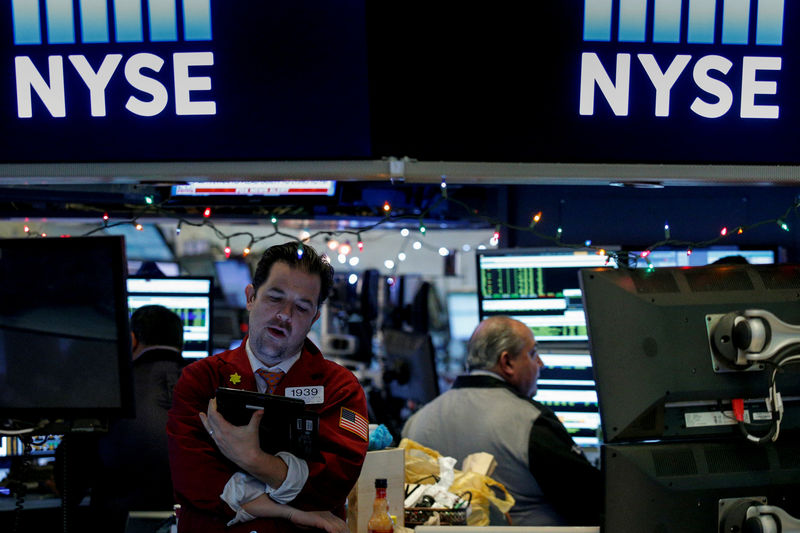Investing.com’s stocks of the week
(Bloomberg) -- The rebound in S&P 500 Index futures from a 5 percent drop Monday could be seen as a sign that the stock market is still recovering from its wounds, but a closer look at the curve of volatility futures shows it may still need intensive care.
Since stocks started tumbling on Feb. 2, a close relationship has developed between the active S&P 500 futures contract price and the spread between first and second-month VIX futures contracts. This correlation only appears during turbulent times.
The entire VIX futures curve is in backwardation, a signal that investors expect more volatility in the near-term. That’s seen in the contract pricing, where front-month contracts are more expensive than second-month. The inverse is normally true.
“The M1-M2 VIX futures spread can be used as another temperature gauge for the market, just like spot VIX,” said Dave Roberts, an independent trader of volatility derivatives and associated products. “That graph works really well in tight time frames when the curve is in extreme backwardation (like now) because the M1-M2 spread is currently very sensitive to the S&P 500’s movements (both up and down).”
Two other times the volatility complex looked like this include the fallout from the market plunge after China’s devaluation of the yuan, and the fourth quarter of 2008 following the collapse of Lehman Brothers.
Typically, the VIX futures curve should be in so-called contango -- or rather, upward sloping. That’s because of the general understanding that the degree of uncertainty tends to increase over time. With the current slope of the curve doing the opposite, it suggests market participants are preoccupied with the risk that’s right in front of their faces.
The connection between equity futures and the spread between the first and second months on the VIX curve falls apart during contango. Therefore, a breakdown in this relationship -- ironically, even one that results in a move lower in equities -- could be an early indication that trading activity is approaching more normal levels.
“If the market moves back down near the recent lows but the M2-M1 spread stays constant -- or even comes in a bit, causing the lines to diverge -- it may signal the fever is starting to subside,” said Roberts.
A move in the curve back to contango would also be a confirmation of a return to normal trading conditions.
